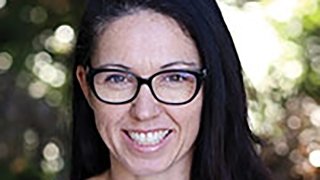National University Associate Professor Patricia Dickenson EdD ’09 literally wrote the book on how to use tech to teach math: Teaching Outside the Box: Technology-Infused Math Instruction.
The former LAUSD teacher also launched Teacher Prep Tech (teacherpreptech.com) to maximize outreach and augment her book.
“I see the future of education technology as being a blend of self-directed learning and maker-space labs that have students working collaboratively and problem-solving within a global community,” she says, “but this will hinge upon teacher preparation and comfort with using it in the classroom.”
WHAT INSPIRED YOU TO EXPLORE ED TECH?
After I graduated from college, I worked in the tech field. When I became math coach at LAUSD, this became a vehicle for me to show more veteran teachers the power of using tech tools to support them in differentiating instruction, challenging gifted learners and representing abstract concepts. At USC Rossier, I was blessed to work with Robert Rueda, who inspired me to become a voice and a coach for my students who are working in urban schools, managing families and are second-career professionals, just like I was.
HOW HAS ED TECH CHANGED OVER THE YEARS?
When I first started teaching, technology did not have today’s functionality or accessibility: With Web 2.0, students can demonstrate what they know and share their thinking with a global audience via screencasting. With 3-D printing, students can design innovative models and create a physical product. With virtual reality, students can have new experiences and travel without leaving the classroom. All of this matters when it comes to education, especially for kids who are disadvantaged.
WHAT ARE A FEW CRUCIAL TECH INNOVATIONS?
There are a plethora, such as using Flip Grid with students for video-based responses to questions or having students create a podcast. For math problem-solving, integrating a 3 Acts Math Task or using Desmos can transform student learning into active problem-solving and critical thinking. The biggest innovation is the ability to put tech in the hands of students. As teachers, we need to use it to create personalized learning for all learners.
HOW DO YOU TEACH TEACHERS TO USE TECHNOLOGY?
I meet them where they are at. For example, a school reached out for support with their physical education classrooms, which are large and have students of various abilities. I taught the teachers how to create QR codes and screencast so that the students can rotate to stations and practice a specific skill, which they can then demonstrate with video. Technology that promotes 21st-century skills and creates novel experiences are essential. If students are just staring at a screen and solving assessment questions, you are wasting instructional time.
WHAT PROMPTED YOU TO WRITE YOUR NEW BOOK, TEACHING OUTSIDE THE BOX?
I wanted to fill the gap between math pedagogy, content knowledge and technology integration, so I focused on instructional practices in math—Daily Routines, Open-Ended Tasks, Project-Based Learning, and Problem-Based Learning—and how tech can be used intentionally across each. Moreover, the book supports real inclusion by making content and pedagogy accessible for all students, and has a ton of resources and examples that teachers can use in their classroom the next day.



